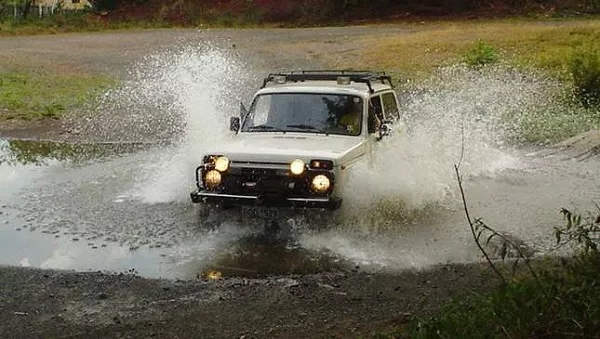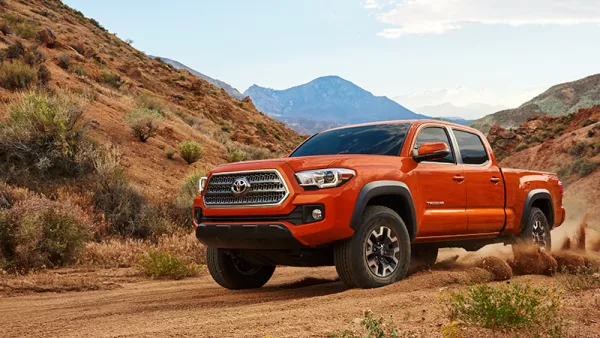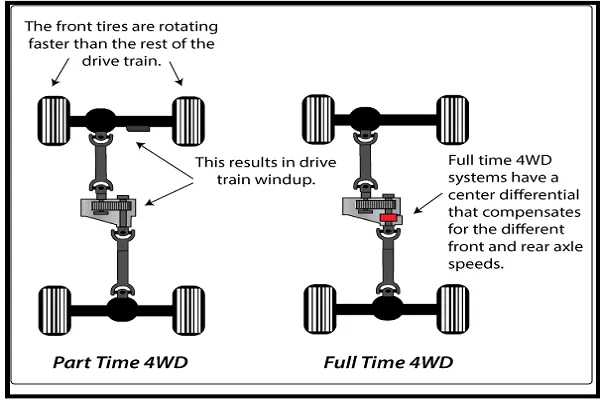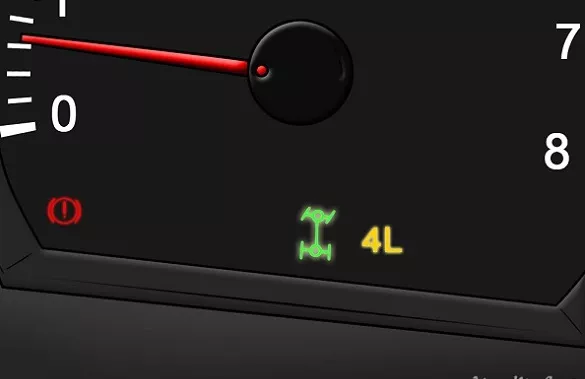More often than not, we would buy a vehicle out of compulsion because of how it looks and what our closest friends and loved ones have to say about it.
A 4WD car is one of the models that most of us are interested to own. The reason is that this kind of vehicle is known to be a beast when it comes to traversing different terrains, which is great especially since you can travel in any part of the Philippines without worries, especially in areas where there are a lot of uphill and downhill roads. Likewise, the country is already prone to flooding, and 4WD cars are known to be great even on still and rushing waters.

4WD cars are perfect for the Philippine roads
With all that said, buying a 4WD car should not just be out of impulsiveness and interest. You must also have great knowledge about what it is, how it works, and how to use it. Fortunately, Philkotse.com will give the essential facts that you should know!
I. Types 4WD vehicles
Most of you would be surprised that a 4WD car actually comes in several types. This is based on the system that has been incorporated into the vehicle. The car’s manual will actually explicitly identify what type the car is, and of course, when you buy one, the salesperson would tell it to you as well.
1. Full-time 4WD
From the name itself, this kind of 4WD car makes power available to all four wheels every time it is used, or simply, the engine propels the four wheels all the time. This is usually achieved through the automatic shifting of power from the car’s front and rear axles. This means that the car can work on different off-road conditions without much effort from the driver.
This system is usually found on truck-based 4WD vehicles. Some of these vehicles are loaded with a differential lock option, which ultimately locks the differential between the two axles. That, in turn, will restrict any kind of differences in the speed of the tires, no matter what the car’s speed and driving conditions are. This provides the highest level of traction, which is great for difficult and wet terrains!

This system is usually found on truck-based 4WD vehicles
However, with all such great features, full-time 4WD cars often have limited mobility on-road as compared to the next type.
If you don't know which type of car you have, you can take at our guide on how to tell if a car is front wheel drive or rear-wheel drive
2. Part-time 4WD
Contrary to the full-time 4WD, this type can work both as 4WD and 2WD (with four or two wheels propelled). This is made possible by either:
- Mechanical lever: A rotary knob or button that is switched on or off manually by the driver, depending on the road condition.
- Sensor: A partial 4WD vehicle with sensors will automatically switch to 4WD and 2WD depending on the road condition it senses.
Although this type of 4WD has more versatility than the full-time type, this lacks the differential between the two axles. As such, this has limited off-road capabilities as compared to the first type.

Full-time 4WD vs. Part-time 4WD Systems
II. Types of range settings
The range settings, namely low and high range four wheel drive, are provided for both full-time and partial 4WD vehicles, and each type has different uses that you must know for better and safer driving.
1. Low-range
This setting helps the car “creep” along when the vehicle is moving at a slow speed. This provides more torque power, but less traction, and can be used in the following conditions:
- Wet and slippery terrains
- Going up or down steep and rocky hills or roads
- Rough roads
- Sandy and muddy surfaces
- On water
2. High-range
This setting provides better traction and is used when you are driving at a high speed and during the following conditions:
- Traversing mud without any cemented surface underneath
- Gravel and big rocks
- When stuck on mud and sand
- Extremely slippery surfaces
III. 4WD cars: Driving tips
Now that you understand the different types and settings of 4WD cars, as well as how they work, it’s now time for us to help you learn how to maximize the use of your vehicle, without compromising safety, of course.
Tip #1: When shifting to low-range, the car should be at Neutral and moving at a speed of just one to two miles per hour. In case you choose to stop before shifting, ensure that the drive system lamp isn’t flashing before shifting the car’s transmission to gear.
Tip #2: If you are shifting from low to high range, you must be in Neutral and at a speed of one to two MPH. Likewise, wait for the drive system lamp to stop flashing.

Use the drive system light as your guide
Tip #3: Low range is always the safest setting, so if you are unsure what to use or about the road condition, just stick with it, unless needed.
Tip #4: At low-range setting, your speed must never be higher than 45MPH.
Tip #5: Always drive slow and steady even if you are using the high-range setting.
Tip #6: When turning, don’t panic when there is a little push and/or skid feeling as this is normal.
Tip #7: On wet surfaces, make sure you stop, turn, and accelerate gently to prevent spinning and deceleration lock up.
Tip #8: When driving on pure mad and deep water, maintain a low speed and constantly step on the brakes to help keep them dry.
IV: Wrap-up: A 4WD car doesn’t make you the King of the road
Much like any other vehicles, buying and owning a 4WD car comes with a lot of advantages and disadvantages, and you must use the right skills for you and the public to stay safe, as well as to ensure that you maximize the use of your vehicle and not expose it to immature wear and tear.
Often, when you have a 4WD car, you would assume that you can drive as fast as you can no matter what road you are on. However, from the tips and facts we provided, such is not true. Hence, always drive safely and responsibly!

No matter if you drive a 4wd, safety is a priority!
>>> Read also: 4WD vs AWD: Getting a grip on the road












